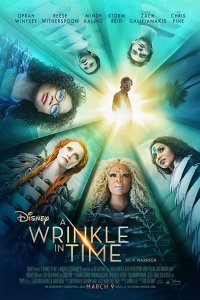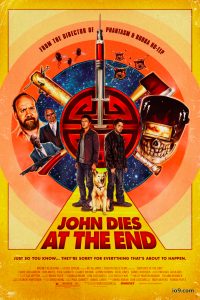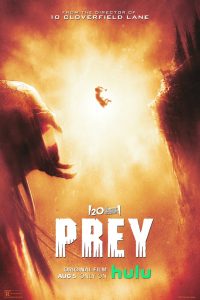Howard Waldrop and Lawrence Person review The Hobbit
 Both: Split decision. Howard doesn’t like it, while Lawrence thinks it’s pretty good (but not great). Both agree it’s markedly inferior to The Lord of the Rings: The Movie Trilogy (henceforth known as LOTR:TMT).
Both: Split decision. Howard doesn’t like it, while Lawrence thinks it’s pretty good (but not great). Both agree it’s markedly inferior to The Lord of the Rings: The Movie Trilogy (henceforth known as LOTR:TMT).
Howard Waldrop: They’ve been trying to make The Hobbit as a movie since the ‘60s (at one time to star the Beatles, with Ringo as Sam Gamgee). I’m sorry that didn’t happen—it would have been closer to Tolkien, and wouldn’t have Big Important Movie written all over it.
Lawrence Person: Like our review of Watchman, this is going to be an insider’s review. If you’re looking for a tabula rasa impression of the movie, you’ll have to look elsewhere. My father read The Hobbit and part of The Lord of the Rings to me as a child. Not only have I seen Peter Jackson’s movie trilogy and read The Hobbit, The Lord of the Rings, and The Simarillion a long time ago, I actually started rereading The Hobbit before I watched the movie to make sure I properly remembered the source material.
On the other hand, I’m not in the “If it wasn’t in the book, it’s evil and wrong” camp, since a movie is inherently a different form. However, I am in the “if you’re going to change something, you better have a damn good reason for doing so” camp.
Jackson has changed a lot more of the original story than he did for LOTR:TMT. Did he have reason to? Sometimes. There’s a considerable difference in tone between LOTR:TMT and TH:AUJ, mainly because there’s a considerable difference in Tolkien’s original works. The Hobbit is a thrilling and occasionally twee adventure, while The Lord of the Rings is epic whose underlying tone is actually quite elegiac. The Hobbit is about going off on an adventure, while The Lord of the Rings is about hurling yourself into the maw of an onrushing catastrophe in a last ditch effort to prevent everything good and right about your world from being utterly and irrevocably destroyed, and knowing the ultimate toll will still be terrifyingly high even if you succeed.
HW: Lord of the Rings was a novel for adults, broken into three parts for purely mechanical reasons. The Hobbit was a short novel for kids, about half the size of any of the parts of LOTR. The Hobbit we have here will be three parts and nine hours, of which this is the first third.
LP: While I’m not wild about the decision to split the story over three movies, there’s no point going in thinking “It’s a bad idea so the movie sucks.” I’m willing to give it a chance.
Here’s what is likely to be a deeply unnecessary plot synopsis: Gandalf the wizard approaches the hobbit Bilbo Baggins in the bucolic backwater of The Shire to recruit him on an adventure. Bilbo’s initial demurral does not prevent thirteen dwarves from showing up to enjoy his hospitality, and then revealing that they mean to recruit Bilbo as a burglar to help them retake their ancient dwarvish home in the Lonely Mountain from the dragon Smaug far to the east. Bilbo changes his mind and joins the party, after which they face many harrowing adventures involving trolls, orcs, wolves, etc., as they journey over and through the forbidding Misty Mountains. Stuff happens. Also, Bilbo finds a choice piece of jewelry.
HW: The movie is more like the book in the first hour, when it’s mostly yak. The Shire’s so bucolic you could barf (the set design is, of course, impeccable). (Sam Gamgee is not in this version.) The movie doesn’t feel like a kid’s book and I miss Gandalf’s fireworks show.
LP: Some of the Shire scenes in the movie are a bit too twee, but they were more so in the book. Overall I thought Jackson and his actors mostly succeeded in melding the light-hearted tone of Tolkien’s novel with the more serious tone of both book and movie trilogies.
HW: What this is is LOTR:TMT redux, ahead of time. There’s all this foreboding (leading toward LOTR:TMT), which is not from the book but is for the audience who saw LOTR:TMT already. A nice, self-contained kid’s book of a movie Just Would Not Do.
There are Orcs and Trolls and Elves and Dwarves (as they later figure) rather than themselves (the Orcs ride something that looks like a Hylodon). There are giant eagles and so forth. (What doesn’t belong are the Stone Giants late in the movie, hurling mountains around—they belong in a Transformers movie.)
LP: The stone giants are indeed overblown. They are mentioned very briefly in The Hobbit, but could not be as impossibly enormous as they’re seen (and ridden!) here, or else the Misty Mountains would have long ago been worn down into the Misty Nubs.
HW: The decision to do this in three parts is, I think, a mistake. You stretch out a much thinner plot line, which leads to the wrong kind of invention from the four screenwriters. (The audience I saw it with was restless by the last of the 2 hours 47 min. running time—not that nothing was happening; too much had already happened and the characters were getting the first view of Lonely Mountain.)
The acting, directing and technical stuff are all swell, although some is action-movie competent (and also clichéd—if there a swinging rope suspension bridge you know it’s gotta fall). So those aren’t the problems with this. The problem is trying to make The Hobbit equal to LOTR.
LP: All the flaws Howard list are true, but they bothered me less. One of the reasons LOTR:TMT worked so well was there was so much plot to encompass that those three long, epic films never felt padded, while TH:AUJ occasionally does. But it’s not nearly as padded as I feared it would be. Likewise, the battle and chase scenes occasionally strain to be epic, while the battles of Helms Deep and Minas Tirith simply were epic. The chase scenes in the goblin lair go on too long. They make explicit what was only implied in the book, which follows Bilbo as the viewpoint character. It’s like the part in Indiana Jones and the Temple of Doom in the mine cart chase where they stopped making a film and started designing the theme park ride.
But for all that, the battles and chase scenes here are quite gripping, the plot is engrossing, and many of the novel’s virtues have been retained.
By contrast, the “Riddles in the Dark” scene between Gollum and Bilbo is actually better than in the book, mainly because Andy Serkis brings such great pathos to Gollum. The screams he lets out after losing his precious are heart-rending, despite us knowing Gollum is a warped, despicable monster.
HW: It’s great to see Ian Holm as the attenuated Bilbo and Christopher Lee as Saruman and people having an actory good time. The actor who plays Radagast has a sled pulled by speedy rabbits that are fun to watch. There’s lots of good CGI that doesn’t call attention to itself. There’s good use of suggestion in some scenes.
LP: Actually, The Council of Elrond Jr. staged here (Gandalf, Elrond, Galadriel and Saruman) is unnecessary and pads out the film. Likewise the inclusion of the wizard Radagast, only mentioned in the book, and who (unnecessarily) restores some of the twee cut from the Shire scenes. (I was not on the edge of my seat wondering if Radagast was going to save his pet hedgehog, which, sadly, was not named Spiny Norman.) Both additions undertake a deeply unnecessary task: providing foreshadowing for a movie trilogy the vast majority of its audience has already seen.
I didn’t mind the opening flashback to the fall of Erebor to Smaug, but I did mind the frame of the elderly Bilbo writing up his adventure right before his big going away party. Are we to believe that Bilbo cranked out the entire story right before his party? It seems an unnecessary device to give Elijah Wood his cameo.
The acting is generally very good, but I felt that both Martin Freeman (Bilbo) and Richard Armitage (Thorin) partially miss the mark. Freeman misses because he’s both a bit too underplayed and seems more like a straight man waiting to deliver a deadpan punch line than Bilbo Baggins. Armitage’s was closer, but 98% of the time his face seems stuck on Inexpressive Firm Resolve. In the book it was merely 90%.
I’m not inclined to ding the movie for the flaws it shares with the source material. There are too many dwarves to keep track of individually, just as in the book. There’s the leader, the fat one, the old one, the one who shoots arrows, and the tattooed bald one that seems vaguely Russian. The rest are sort of a short, hairy blur. The trolls scene seems jokey compared to the potential danger, just as in the book. And Gandalf’s goings and comings seem entirely too conveniently timed as Instant Plot Helper.
Some changes are for the better. I like that the elves of Rivendell seem more like the noble LOTR:TMT version than those taunting little tree pricks in the book. Thorin seems more competent about taking basic precautions like “setting a watch while we sleep” than his novel version. Though the battle with orcs, wargs and burning trees is considerably different, it flows more smoothly, even if the confrontation itself goes on long enough that you long for Nelson Muntz to shout out “Quit milking it!” And once again, most of the singing has been excised (though more remains than in LOTR:TMT; I had a friend complain once that the books were “mostly walking and bad poetry,” which is unfair but not entirely unjustified).
But others are for the worse. I’ve already mentioned most of them, but there was really no need for Jackson to make the fat dwarf as wide as a church door, or give the Great Goblin an obese sagging chin-wattle.
One major change, of foregrounding, an old battle and grudge between Thorin and the giant orc Azog (in the books it was Azog’s son, mostly offstage and in appendices). I’m ambivalent about. It does provide more narrative impetus for the on-screen action rather than the party wandering from one encounter to another. On the other hand, Azog acts more like a generic movie villain than a Tolkien character.
But ultimately, I enjoyed The Hobbit: An Unexpected Journey as a gripping adventure in its own right, and a mostly faithful adaptation of the novel. It’s a mess where the novel was a mess, and padded where it wasn’t, and shares some of the flaws of modern special-effects-laden cinema. But with all those caveats, I can’t help but thinking that we would be hailing it as masterpiece of filmmaking if only Jackson hadn’t already set the bar so high.
And my inner child is definitely looking forward to more giant spiders and Smaug in the last two films.
HW: So why didn’t I like this first third of a movie, besides the fact I’ll have to shell out $21 to see the whole thing? Call me curmudgeonly–there should be some movies more like the work they’re based on. This ain’t it.








Pingback:Howard Waldrop and I Review The Hobbit « Lawrence Person's Futuramen
Sam Gamgee isn’t in “The Hobbit.”
To be honest, Robert, neither was Frodo.
I loved the movie. I know there were differences, but I still loved it. And I thought that Freeman was perfect, if Armitage was a bit young for Thorin.
“The Elves of Riverdale”?
Thanks, now I have the indelible image of Elrond as Jughead stuck in my mind.
Radagast is played by Sylvester McCoy, my favourite Dr. Who to date.
Pingback:Science Fiction, Fantasy & Horror Tidbits for 12/18/12 - SF Signal - SF Signal
Pingback:Galadriel As You’ve Never Seen Her Him Before « Lawrence Person's Futuramen
Correct, Sam and Frodo were not even mentioned in The Hobbit. But the biggest hole for me is the whole Azog thing chasing Thorin & Co in broad daylight. Light insensitive Orcs weren’t around until Saruman adapted them decades later.